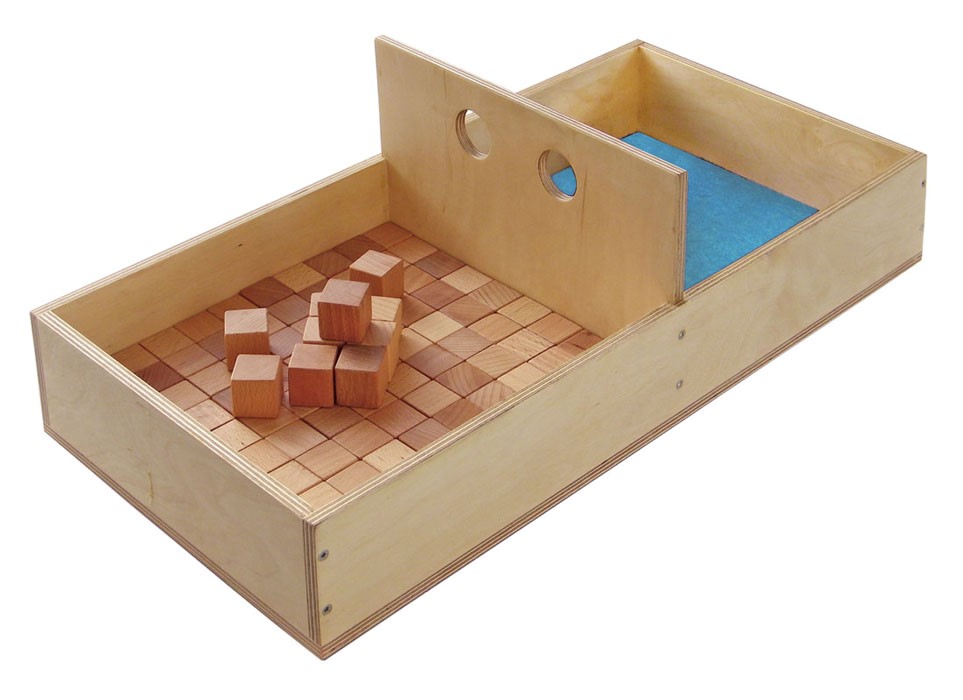The Box and Block Test is a simple, fast, reliable, and valid test for assessing hand function, including dexterity, and determining the dominant hand. It is widely used by specialists in physical rehabilitation and occupational therapy, including for patients with cerebral palsy.
This test was developed in 1985 to assess hand function in adult patients with cerebral palsy. The goal of the test is to determine the number of wooden cubes that the patient can transfer upon a partition from one half of the box to the other in one minute.
The test takes about five minutes to complete.
The test requires a wooden box divided into two equal compartments by a 15 cm high partition. In one half of the box there are 150 wooden 1-inch (2.5 cm) cubes. The box should be oriented lengthwise and placed at the client’s midline, with the compartment holding the blocks oriented towards the hand being tested.

The patient is explained and shown how to rearrange the cubes. The test begins with the unaffected or dominant hand. A trial period of 15 seconds is allowed at the beginning of the test for each hand.
After signal the patient begins to move the cubes from one half of the box to another as soon as possible. The instructor records the time and stops the patient after 1 minute. First, the dominant hand is assessed, then the cubes are moved to the second part and the other hand is examined. The number of cubes being transferred with each hand is registered.
Features of the test:
- During the test it is necessary to pay attention to whether the fingertips of the subject crossed the partition, the block is considered transferred only under this condition.
- Test subject cannot take several blocks at the same time, if they transfer multiple blocks at a time, only one of them counts.
- The cube that fell out of the box after being transferred upon a partition (fingertips of the subject crossed the partition) is counted.
- A cube thrown to the other side without being transferred upon a partition (fingertips of the subject did not cross the partition) is not counted.
The more cubes were transferred per minute - the higher the score for the test. Higher scores on the test mean better dexterity and therefore better hand function.
Standards for healthy people of different ages are provided in the article “Mathiowetz, V., Volland, G., et al. (1985). Adult norms for the Box and Block Test of manual dexterity. Am J Occup Ther 39(3160243): 386-391”.
You can watch a video of the test demonstration in English here.

